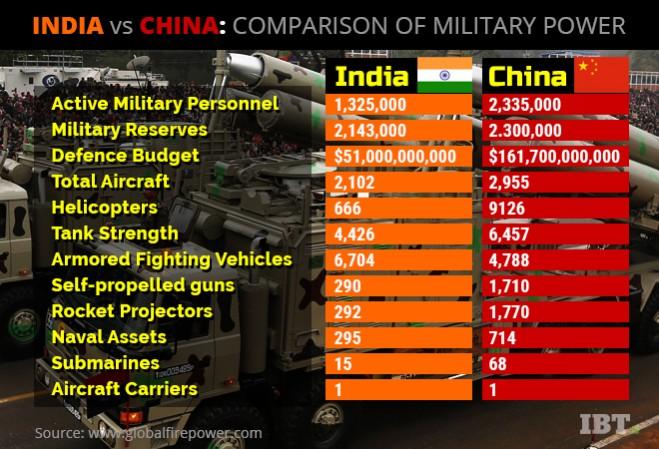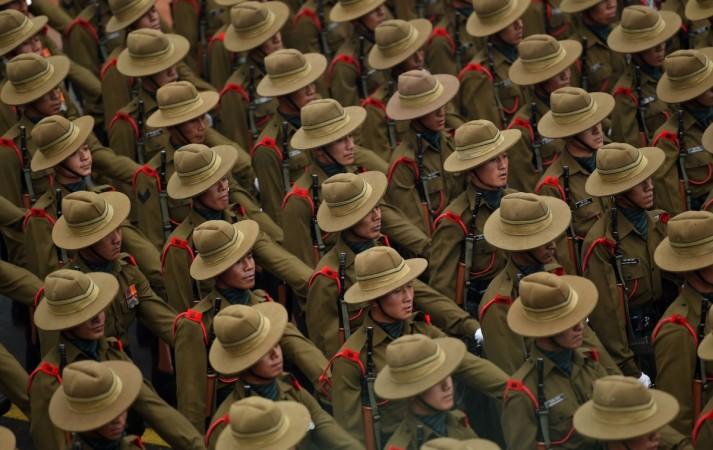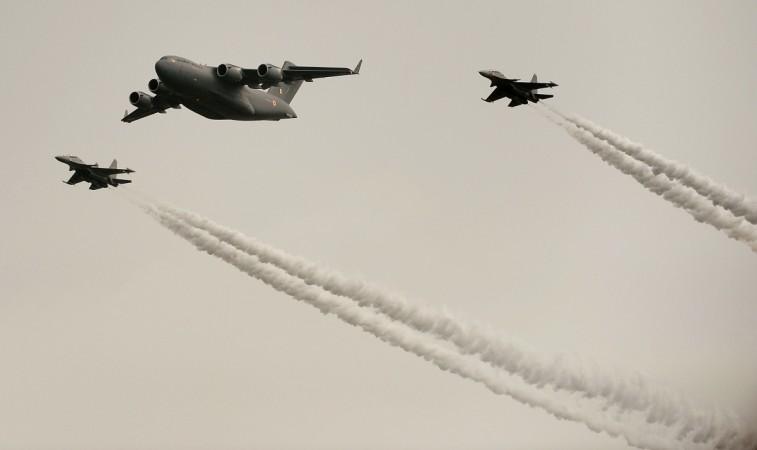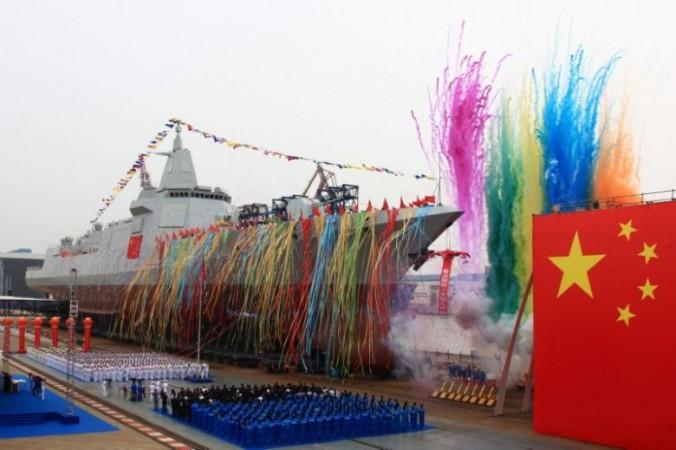At Doklam, an area near Sikkim, soldiers from India and China have been locked in a standoff for nearly a month now. While India has deployed more troops in a "non-combative mode" in the region to strengthen its position, experts are concerned about the deteriorating ties between the two nations, which are still overcoming bitter memories of the 1962 Sino-Indian War.
At a time when China dismisses India's assertion in the region along Bhutan border as "untenable," and wants it to recall the 1962 war and withdraw troops from the area, India has maintained a bold posture.
"India of 2017 is different from India of 1962. Those were different situations," Union Defence Minister Arun Jaitley said last week.
But, how much has India changed over the last few decades to challenge China in the event of a future conflict?

During the Republic Day parade on January 26, much of India's military might was focused on China, which is a headache for India's planners, because of its huge defence budget and military modernisation plans. Although sheer numbers or technological advantage alone cannot win wars, defence postures of both nations are one of the major factors that can shape a future India-China war.
According to military analytics website Global Firepower, China has the third most powerful military in the world after the US and Russia. China, which spends $161 billion annually for defence-related purposes, is followed by India with an annual defence spending of $51 billion.
Let's have a look at how the militaries of both countries stack up against each other:
Manpower

India has 1,325,000 active military personnel, or the "ready-to-fight" soldiers, compared to 2,335,000 active frontline fighters for China. In addition, China also has 619 million people who are fit to join the army. India, on the other hand, has nearly 490 million people who are fit for military services.
Meanwhile, 4,635,000 military personnel are currently serving in the Chinese military, compared to 3,468,000 in Indian military.
Aircraft

The Indian military has 2,102 aircraft, including 676 fighter jets, 809 attack aircraft, 666 helicopters and 16 attack helicopters. China, on the other hand, has nearly 3,000 aircraft, which include 1,271 fighter jets, 1,385 attack aircraft, 912 helicopters and 206 attack helicopters.
Tanks and vehicles

Despite technological advancements in the modern battlefield, the combat tank still remains one of the primary spearheads for ground offensives. Indian military currently uses 4,426 tanks while Chinese military has 6,457 tanks.
The People's Liberation Army (PLA) also recently conducted trials of a new light battle tank (LBT) in Tibet. A Chinese government official, however, said that the trials were aimed at testing the tank's performance and not targeted at any country.
India, however, has 6,704 armoured fighting vehicles, almost 2,000 more than China's 4,788 vehicles. In terms of Rocket Projectiles, China has the upper hand with 1,770 systems, compared to only 292 used by the Indian military.
Naval Assets

Naval strength is one of the most important defining military factors as it can play a significant role in responding to territorial disputes as well as enforcing maritime borders. Indian military is equipped with 295 such assets, including 3 aircraft carriers, 15 submarines and 11 destroyers.
While China has only one aircraft carrier, it lags India far behind with 68 submarines and 35 warships. Last week, the country also launched what it claimed to be the most advanced and largest warship in Asia.
The new warship was the first of Type 055 guided-missile destroyers that had been designed to join China's future aircraft carrier battle groups. With a displacement of more than 12,000 tonnes, the new warship surpasses South Korea's DDG-991 and Japan's Atago class, both having a 10,000-tonne displacement.
Military Mobilisation
Roadways are crucial for mobilising the army, allowing the troops to access vital areas of a country. China has total roadway coverage of 3.8 million kilometres while India has a similar coverage of 3.3 million kilometres.
Here's a further breakdown of military coverage:
| India | China | |
| Railway coverage (km) | 63,974 | 86,000 |
| Waterway coverage | 14,500 | 1,10,000 |
| Coastline coverage | 7,000 | 14,500 |
China has immensely reinforced its military capabilities since the 1962 war. Chinese President Xi Jinping had also recently undertaken in-depth military reforms by readjusting and optimising the country's military structure.
While China dreams to become the most powerful nation in the world, beyond ensuring economic prosperity, India has also focused more on boosting its military strength by adding air, missile and surveillance assets to its arsenal over the last few years.
But to make its operational concepts sufficiently tailored to take on the evolving Chinese challenge, it is high time India undertakes some effective military reforms.
"While Indian planners have moved toward adopting a more offensive form of area denial, they continue to rely, for the most part, on conventional forces that could be overcome or circumvented in the event of a fast-moving, localized, and limited border confrontation launched from higher elevations," Iskander Rehman for the Naval War College Review wrote in a paper, titled "A Himalayan Challenge: India's Conventional Deterrent and the Role of Special Operations Forces along the Sino-Indian Border."









